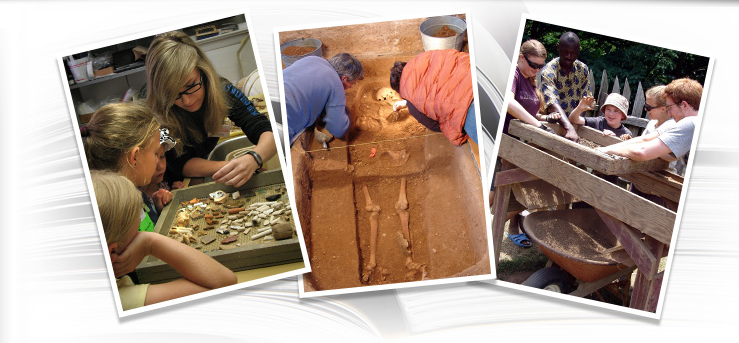2013 Week 10
The final week of the 2013 field school was mostly spent completing units begun during Tidewater Archaeology Days. We finished excavating plow zone and defined features in all of those units. The potential well feature was not excavated but its recording was completed. I may do some additional work on this feature in the next few weeks. We returned to work on the possible chimney feature and found the dirt had hardened as it dried out. It required a much larger tool to break up the dirt.
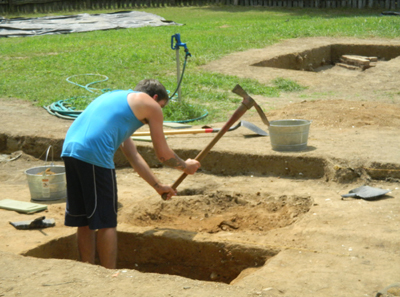
Using a larger tool to break up dirt in the chimney area.
We were not able to finish this feature and it is another item on my list for the next few weeks.
While the possible chimney feature was not finished, we did recover a very significant artifact from the fill.
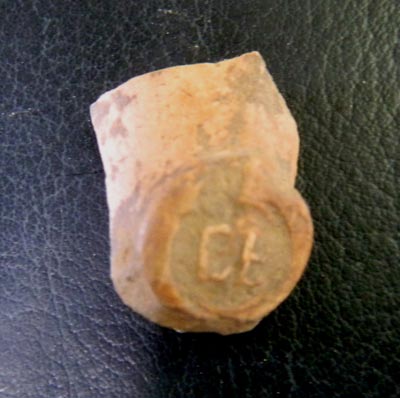
Marked pipe of Edward Bird found in the chimney feature.
The photo shows the heel of a tobacco pipe bearing an EB mark. Edward Bird was an Englishman who migrated to Amsterdam in the late 1620s. He became a freeman in 1638 and began his own pipemaking business. Bird, his son, also Edward, and his grandson, also Edward, made huge numbers of pipes up to the 1680s. Later, the grandson sold the mark and it continued to be used by others up to 1700. Researchers have identified a number of different styles of EB marks and the one pictured here has been attributed to the period c. 1640-1660. Similar marks were common in the fill of Pope’s Fort ditch, around the Calvert House, which was filled in c. 1648. The finding of this marked pipe, and the lack of other artifacts from the feature, suggest that the possibly chimney feature was an early one.
An important part of our research in the yards around the Calvert House has been following the fences to determine how the space was divided and used. As mentioned in previous weeks, the single fence that crossed the top of the possible well feature turned out to be two intersecting fences. This week we completed a unit to the west which showed both fences heading for their intersection.
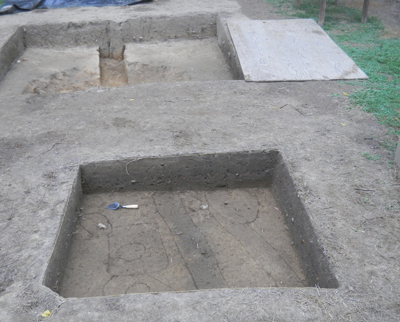
Two converging fences heading to the well area.
In the foreground, the two fences can be seen converging while the larger unit in the background shows where they intersect and run in the same direction. Understanding and dating the fence layout is vital to interpreting the changing function and use of the building. It is hoped that one, or both of these fences is related to the north wall of Pope’s Fort.
A couple of artifacts found this week stand out. The first of these is a pipe made of red and white clay, termed an “agated” pipe.
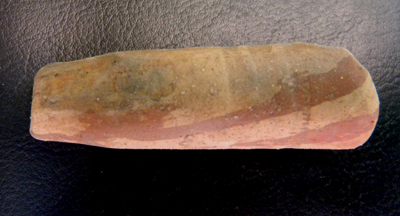
“Agate” tobacco pipe with rouletting and stamped decoration.
These are locally made pipes which combined both types of clay. The pipe is decorated with three rows of rouletting and is faintly stamped with a rosette, two of which are visible. The end of the pipe seems to have been carved down to make it easier to smoke. This pipe bears many similarities with pipes made by Emanuel Drue at the Swan Cove site in Anne Arundel County. His pipe production has been dated c. 1650-1669.
A second artifact of interest is a guncock.
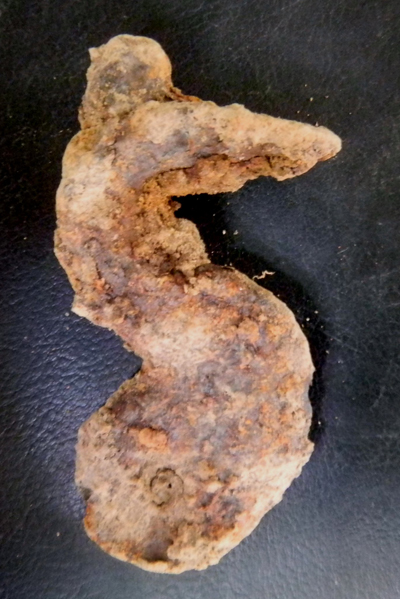
Guncock from 17th-century flintlock musket.
This was the part of a flintlock musket which held the flint. Finding a recognizable gun part was a great thrill to the students.
Finally, I wish to express my thanks to the field school students who worked so hard this summer and whose discoveries I have chronicled over the past 10 weeks.
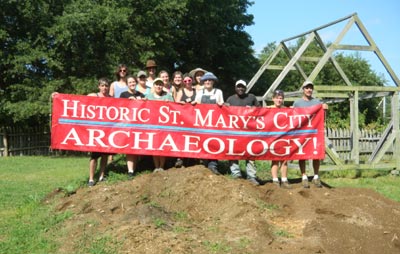
The 2013 HSMC Archaeological Field School.
You are hereby released from your indentures by Governor Leonard Calvert.


